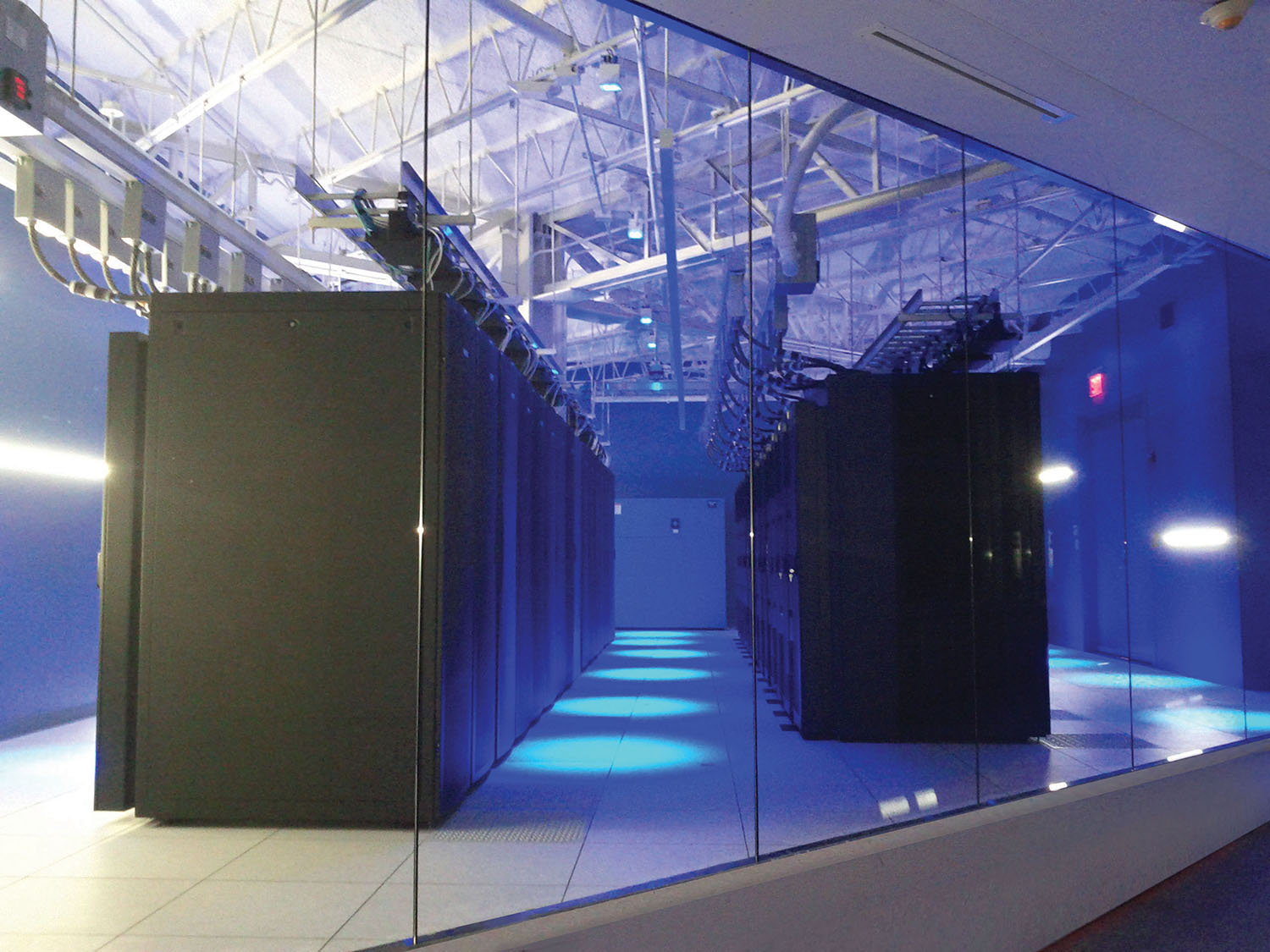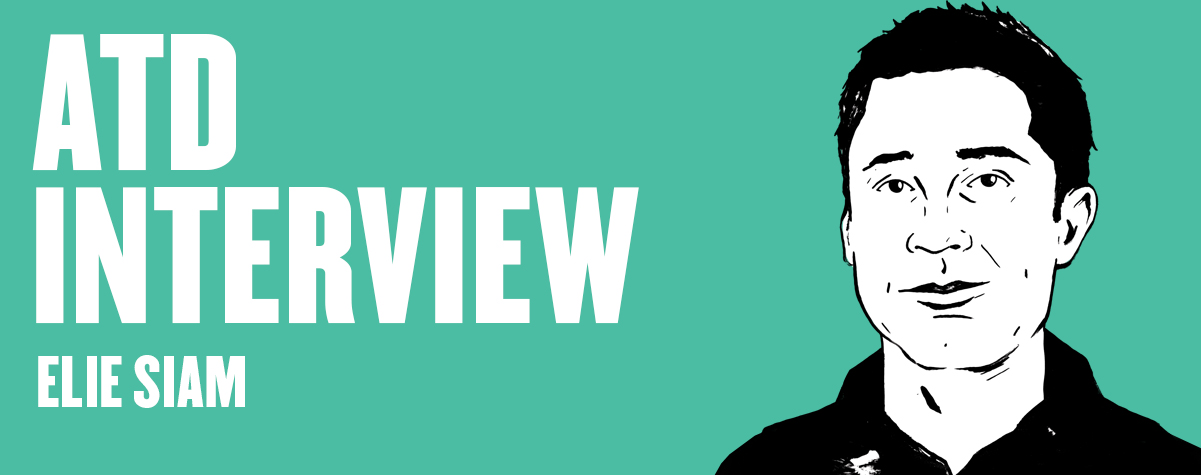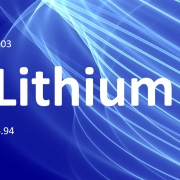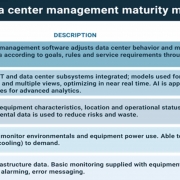ATD Interview: Elie Siam, Pierre Dammous & Partners
Industry Perspective: Three Accredited Tier Designers (ATDs) discuss 25 years of data center evolution
The experiences of Christopher Johnston, Elie Siam, and Dennis Julian are very different. Yet, their experiences as Accredited Tier Designers (ATDs) all highlight the pace of change in the industry. Somehow, though, despite significant changes in how IT services are delivered and business practices affect design, the challenge of meeting reliability goals remains very much the same, complicated only by greater energy concerns and increased density. All three men agree that Uptime Institute’s Tiers and ATD programs have helped raise the level of practice worldwide and the quality of facilities. In this installment, Elie Siam of Pierre Dammous & Partners examines worldwide trends with a perspective honed in the Uptime Institute’s EMEA region. This is the second of three ATD interviews from the May 2014 Issue of the Uptime Institute Journal.

Mathworks data hall, a Pierre Dammous & Partners project.
Elie Siam graduated in 1993 from the American University of Beirut and joined Pierre Dammous & Partners (PDP) in 1994 as a design engineer. PDP is an engineering consulting firm with offices in Beirut, Riyadh, and Abu Dhabi. The firm is dedicated to the supply of quality services in mechanical, electrical, plumbing, fire, and telecommunications systems. After multiple successes, Mr. Siam became the lead of the team for resolving mission-critical facilities problems and eventually proved to be a local authority in the Electrical Engineering field. He is an active contributor to Lebanese Standards and a Building Services Instructor at Lebanon’s Notre Dame University. He has special qualifications in telecommunications and data networks and established highly performing systems for large banks (Credit Libanais, SGBL, SGBJ, Fransabank, CSC, BBAC, LCB, BLOM), telecom companies (IDM, STC), universities (LAU, Balamand), and leading media companies (Annahar, VTR, Bloomberg).
Elie, please tell me about yourself.
I have been headquartered in Beirut and worked here since 1993, when I graduated from the American University of Beirut as an electrical engineer and started work at Pierre Dammous & Partners (PDP) in 1994, so just over 20 years now.
A substantial part of our work at PDP is related to telecom and power infrastructure.
When PDP started with server rooms and then data centers, I decided to get an ATD accreditation, due to my exposure to networks.
We have done a lot of data center projects, not all of them Tier Certified. The issue is that the data center market in Lebanon is small, but clients are becoming more aware. Consequently, we are doing more Tier designs. Tier III is the most commonly requested, mostly from banking institutions.
The central bank of Lebanon has asked for qualifying banks to go to Tier III and now the market is picking up.
We are also starting to do design and construction management for data centers outside Lebanon as in Dubai (Bloomberg Currency House), Amman (Societé Générale de Banque – Jordanie), or Larnaca (CSC bank). We also did large colocation data centers for a major telecom company in Riyadh and Dammam.
Which project are you most proud of?
Well, I’ve worked on many kinds of projects, including hospitality, health care, and data centers. My last data center project was for a Saudi Arabian telecom company, and that was a 25-MW facility to house 1,200 server racks. It was awarded Tier III Certification of Design Documents.
Our responsibility was to do the design up to construction drawings, but we were not involved in the construction phase. The client was going to go for a Tier Certification of Constructed Facility, but, again, we are not involved in this process. It is a very nice, large-scale project.
The project is composed of two parts. The first part is a power plant building that can generate 25 MW of redundant continuous power, and the second part is the data center building.
Is the bulk of your work in Beirut?
By number of projects, yes. By the number of racks, no. One project in Saudi Arabia or the Gulf countries could be like 50 projects in Beirut. When you design a project in the Gulf Countries, it’s for 1,200 racks, and when you design one in Beirut, it’s for about 25 racks.
What drives the larger projects to Saudi Arabia?
Money, and the population. The population of Lebanon is about 4 million. Saudi Arabia has about 25-30 million people. It is also fiscally larger. I’m not sure of the numbers, but Saudi Arabia has something like US$60 billion in terms of annual budget surplus. Lebanon has an annual budget deficit of US$4.5 billion.
Tourism in Lebanon, one of the main pillars of the economy, is tending to zero, due to political issues in Syria. Consequently, we have economic issues affecting growth.
Is it difficult for a Lebanese company to get projects in Saudi Arabia?
Yes, it can be difficult. You have to know people there. You have to be qualified. You have to be known to be qualified. You can be qualified, but if you can’t prove it you won’t get work, so you have to be known to be qualified so you can grasp jobs.
We have a branch office in Dubai for Dubai and UAE projects and also for some projects in Saudi Arabia as well. We‘ve done many projects in Jeddah and Riyadh, so people know us there.
Also, we are partly owned by an American company called Ted Jacob Engineering Group, which owns 25% of PDP. This ownership facilitates the way we can get introduced to projects in the Gulf because our partner is well known in the region.
Tell me about some of your current projects.
We are working on three new data centers, each above 200 kW. Two of them belong to Fransabank (main site and business continuity site) while the third belongs to CSC bank. All of them will be going for Tier III Certification. We’re also working on several other smaller scale data center projects.
One of the major data centers currently in construction in Lebanon is for Audi Bank, which is designed and executed by Schneider Electric. The second project is for another banking institution called Credit Libanais. It is 95% complete, as of April 2014. We are the designers. We also worked as integrators and BIM (building information modeling) engineers and did the testing and commissioning. This is a 120-kW data center.
The Credit Libanais facility has the following features:
- Chilled water-cooled white space. The chilled water system provides higher efficiencies than DX (direct expansion) systems and avoids heavy use of CFC (chlorofluorocarbons) derivatives.
- The chilled water system uses high water supply temperature (10°C versus 6°C for standard systems), which significantly increases efficiency and running costs.
- Operation at higher water temperature reduces the need to provide humidification in the computing space. That saves energy.
- The chiller compressors and pumps are provided with electronically commutated (EC) technology, allowing the direct current motors to modulate from 0-100% to optimize energy consumption based on actual demand.
- A special variable primary chilled water system does not require secondary chilled water pumps, which further reduces energy expenditures.
- Computer room air conditioning units are provided with variable speed EC fans modulating from 0-100% to reduce energy consumption.
- Cold air containment prevents mixing of cold and return hot air, which further enhances the overall system efficiency.
- The fresh air for the data center is centrally pre-treated with an energy recovery unit through thermal exchange with office space exhaust.
- Associated office space is air conditioned by a VRV (variable refrigerant flow) system for the high efficiency and lower energy expenditures. The system interfaces with the BMS (building management system) for scheduling and centralized parameterization to avoid operation during unoccupied periods
- The latest VRV system technology provides cooling to the office space with Unit COP (coefficient of performance) greater than 4 using R-410 refrigerant.
- Recirculated air from offices ventilates the UPS/battery room through transfer fans, which reduces the amount of treated fresh air.
- Modular UPS systems adjust capacity to actual IT loads. The efficiency of the UPS system is 95.5% at 25% load and 96% at 100% load.
- T5 fluorescent lamps with low-loss optics also save energy. The lighting is switched by a KNX lighting control system that includes automatic motion sensors and centralized parameterization and scheduling to avoid operation during unoccupied periods.
- The BMS integrates all subsystems, either directly or via SNMP (Simple Network Management Protocol), KNX, and data center infrastructure (DCIM) controls. The system allows an overall insight on the operations of the data center, monitoring all energy expenditures, faults, and alerts.
- DCIM optimizes operations and increases overall efficiency by operating at lower PUE.
What does Credit Libanais plan to do with the facility?
Credit Libanais is one of the top banks in Beirut. They have about 70 branches. They are constructing a new 32-story headquarters building. This will be the main data center of the bank. The data center is in a basement floor. It is about 450 m2 with 120 kW of net IT load. The data center will handle all the functions of the bank. An additional 350-m2 space hosts a company called Credit Card Management (CCM). CCM has also a dedicated server room within the Credit Libanais data center.
At first Credit Libanais did not want to engage in Tier Certification because they do not provide colocation services, but they changed their minds. In March, I queried the Uptime Institute for a proposal, which I brought back to the bank. The proposal includes full support including Tier III Certification of the Design, Constructed Facility, and Operations.
Can you describe the cooling system of the Credit Libanais data center in more detail?
The critical environment is water cooled. Not only is it water cooled, but it is water cooled at relatively high temperatures. Normally water-cooled systems for building’s supply water at around 6°C; this data center uses a 10°C chilled water temperature, which greatly increases the efficiency and reduces cost.
Since the cold water temperature is not too low, there is no need to provide large-scale humidification because water will not condense as much as when the chilled water temperature is lower, which substantially saves on energy.
The chillers also have variable speed compressors and variable chilled water pumps, and the fans of the chillers and the fans of the CRACs all have EC variable speed fans so that you can permanently adjust the speed to exactly the amount of capacity you would like to have and are not working at either 100 or 0%.
What’s the value of being an ATD?
I believe that you would need to have substantial experience before you go for the accreditation because if you do not have experience you would not benefit. But, it is very useful for people who have experience in mechanical and electrical engineering and even more useful for those who have more experience in data centers.
You could get experience from working on clients’ projects, but you would need the accreditation to know how things should be done in a data center and what things that should not be overlooked. To do that you need a methodology and the ATD gives you that.
ATD gives you a methodology that eliminates forgetting things or overlooking things that could lead to failure.
When you go through the training they teach you the methodology to check each and every system so that they are Concurrently Maintainable or Fault Tolerant, as required by the client.
This article  was written by Kevin Heslin, senior editor at the Uptime Institute. He served as an editor at New York Construction News, Sutton Publishing, the IESNA, and BNP Media, where he founded Mission Critical, the leading publication dedicated to data center and backup power professionals. In addition, Heslin served as communications manager at the Lighting Research Center of Rensselaer Polytechnic Institute. He earned the B.A. in Journalism from Fordham University in 1981 and a B.S. in Technical Communications from Rensselaer Polytechnic Institute in 2000.
was written by Kevin Heslin, senior editor at the Uptime Institute. He served as an editor at New York Construction News, Sutton Publishing, the IESNA, and BNP Media, where he founded Mission Critical, the leading publication dedicated to data center and backup power professionals. In addition, Heslin served as communications manager at the Lighting Research Center of Rensselaer Polytechnic Institute. He earned the B.A. in Journalism from Fordham University in 1981 and a B.S. in Technical Communications from Rensselaer Polytechnic Institute in 2000.


 2020
2020 UI 2020
UI 2020 Ui 2021
Ui 2021

 Getty
Getty
